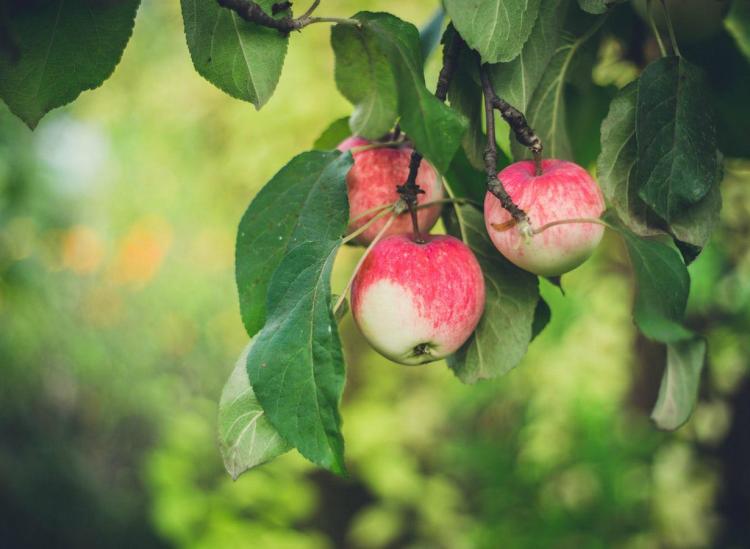Here’s Your Guide To Cooking With Apples

Unsplash
You don’t get more versatile than an apple. You can do pretty much anything with the fruit. Eat them fresh, roast them, fry them, batter them, dip them in honey, add them to salads and meat dishes, make applesauce, bake pies — there’s really no limit. When it’s apple season and you have a surplus on your hands, here’s your guide to cooking with the different varieties out there.
Gala
When you want an apple for fresh snacking during the day, Gala apples are the best. Cut them up for a salad with crumbled feta cheese, walnuts and a mustard vinaigrette. They’re imported from New Zealand and now widely grown in the Northwest. Gala apples are juicy, fresh and fragrant with a mild and sweet flavor. These aren’t the best for baking since they can become a little rubbery in the process.
Honeycrisp
Honeycrisp apples are juicy, crisp and sweet with a little bit of tartness and a cream-colored inside. These apples were developed at the Minnesota Agricultural Experiment Station’s Horticultural Research Center. They’re the official state fruit of Minnesota and a cross between a Macoun apple and a Honeygold apple. Honeycrisp apples are great either fresh or when used for baking. Since these apples have such a broad range of talents between the flavor and texture, they aren’t the cheapest apples of the bunch. Their shelf life is pretty impressive, though. They can last up to seven months in the fridge.
Fuji
These big, red apples have golden highlights. They’re flavorful, bold and a cross between Red Delicious and a lesser known variety called Ralls Janet. Fuji apples will hold up better than most other sweet apples. They’re perfect when you eat them fresh. Add them to your salads, slaws or slice them up to serve with your cheese plate. While Fuji apples may be a little too juicy for traditional baking, you can easily simmer them on the stovetop and make a fresh, sweet apple topping for your baked goods.
Braeburn
Similar to Fuji apples, Braeburn apples are great to eat fresh, but they are also ideal for slow cooking with meat, making jams and preserves and baking into cakes, crisps, pies and galettes. Since Braeburn apples hold their shape really well and don’t release too much liquid when they cook, this variety is perfect for hollowing out and stuffing to make baked apples.
Red Delicious
If you’re looking to make your own apple cider, Red Delicious apples are the answer. They are softer in texture with a mellow and not-too-sweet flavor. They’ll stand up to cooking, but they’re also just as good for snacking on. Peel off the skin and add Red Delicious apples to a salad, add them to a smoothie or make applesauce.
Granny Smith
Granny Smith apples are perfect for baking with their refreshing tart flavor. They’re firm and crisp with a bright green color. Their flavor makes them equally delicious in savory dishes, where the firm texture holds up to different levels of heat and cooking methods.
Pink Lady
These tart apples work for both fresh eating and baking. Pink Lady apples are crisp in texture with a bright pink color and tart and sweet flavor. This is the apple you’re most likely to see in those pre-packaged apple slice packets at the grocery store because of the bright pink skin. Pink Lady apples are the first apple to bloom and the last to be harvested. Use them for snacking, salads, smoothies, sauces and baking.
Cortland
You’ll recognize a Cortland apple for its bright red appearance with dark red streaks. You’ll usually see a patch of green on the top near the stem. These apples have a white flesh that’s finely grained and juicy with a sweet-and-tart sharp flavor. Eat Cortland apples fresh, make preserves, add them to salads, sandwiches, burgers and even quesadillas. You can also bake them into cakes, tarts, cobblers, quiches and galettes. Cortland apples don’t store very well, so you should eat them fairly close to the time you buy them.











